Sandown is a seaside resort and civil parish on the south-east coast of the Isle of Wight, England. The neighbouring resort of Shanklin and the settlement of Lake are sited just to the south of the town. Sandown has a population of 11,654 according to the 2021 Census, and the three Sandown Bay settlements form a built-up area of more than 20,000 inhabitants. Sandown is the Bay's northernmost town, with its easily accessible, sandy beaches running continuously from the cliffs below Battery Gardens in the south to Yaverland in the north.
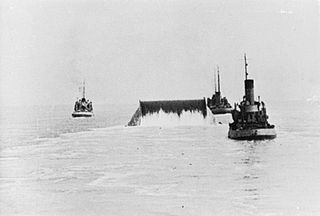
Operation Pluto was an operation by British engineers, oil companies and the British Armed Forces to build oil pipelines under the English Channel to support Operation Overlord, the Allied invasion of Normandy during the Second World War.

The Needles Batteries are two military batteries built above the Needles stacks to guard the West end of the Solent. The field of fire was from approximately West South West clockwise to Northeast and they were designed to defend against enemy ships.

Fort Nelson, in the civil parish of Boarhunt in the English county of Hampshire, is one of five defensive forts built on the summit of Portsdown Hill in the 1860s, overlooking the important naval base of Portsmouth. It is now part of the Royal Armouries, housing their collection of artillery, and a Grade I Listed Building.

Yaverland is a village and former civil parish, now in the parish of Sandown, on the Isle of Wight, England. It is just north of Sandown on Sandown Bay. It has about 200 houses. About 1⁄3 of a mile away from the village is the Yaverland Manor and Church. Holotype fossils have been discovered here of Yaverlandia and a pterosaur, Caulkicephalus. The White Air extreme sports festival was held annually at Yaverland pay and display car park between 1997 and 2008, but moved to Brighton for 2009.

Fort Gomer was one of the Palmerston Forts, in Gosport, England, the southernmost and first-built Polygonal fort in the defence line to the west of Gosport. It was located on land immediately to the west of the present Gomer Lane. Fort Gomer was the most southerly fort in the line of five which formed part of the ‘Sea Front and Spithead Defences’, Inner Line, Land Front, Left Flank. This line of forts was later known as the Gomer-Elson Line or 'Gosport Advanced Line' This consisted of, from south to north, Fort Gomer, Fort Grange, Fort Rowner, Fort Brockhurst and Fort Elson. An inscription above the main entrance through the barrack block read `Erected AD 1853’. The fort was almost complete before work began on Fort Elson in 1855. The estimated cost of Fort Gomer was £92,000 in 1869.

The Wildheart Animal Sanctuary, previously known as the Isle of Wight Zoo and Sandown Zoo, is a wildlife sanctuary on the coastline of Sandown, Isle of Wight. At 8.5 acres, it is the largest collection of exotic animals on the Island.
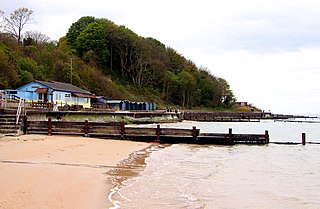
Warden Point Battery is a battery on the Isle of Wight begun in 1862, that was originally armed with 7-inch and 9-inch rifled muzzle loaders on barbette mountings.
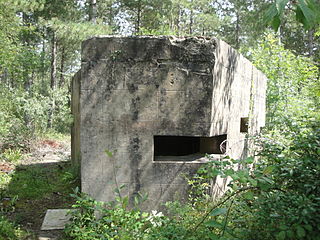
Bouldnor Battery is a military battery located in Bouldnor on the Isle of Wight. It saw active service in World War II and was fully decommissioned in 1956. Today, it is a Scheduled Ancient Monument.
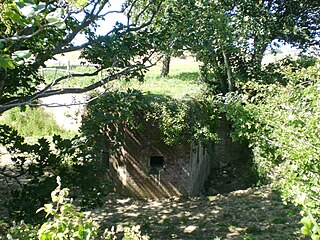
Yaverland Battery is a battery on the Isle of Wight, United Kingdom. It was constructed between 1861 and 1864.

Puckpool Battery is a battery located at Puckpool Point, close to the town of Ryde on the Isle of Wight. It is one of the many Palmerston Forts built on the island to protect it in response to a perceived French invasion. Construction of the battery began in 1863 and was completed by March 1865.

Nodes Point Battery is a battery located at Nodes Point on the Isle of Wight. It is one of the many Palmerston Forts built on the island to protect it in response to a perceived French invasion. Construction of the battery began on 16 August 1901 and was completed by 20 April 1904.

Redcliff Battery is a battery located to the west of the Culver Cliffs and east of Yaverland on the Isle of Wight, England. It is one of the many Palmerston Forts built on the island to protect it in response to a perceived French invasion. Construction of the battery began in April 1861 and was complete by September 1863 at a cost of £4,776. Most of it has fallen into the sea. Only small amount left May 2020
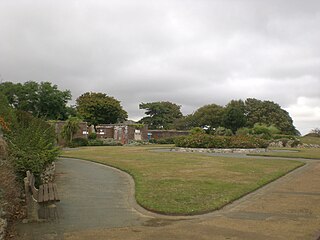
Sandown Barrack Battery is a battery located in Sandown Bay close to Sandown on the Isle of Wight in England. It is one of the many Palmerston Forts built on the island to protect it in response to a perceived French invasion.

Cliff End Battery is a battery on the west coast of the Isle of Wight overlooking Fort Albert. It is one of the many Palmerston Forts built on the island to protect it in response to a perceived French invasion. Construction of the battery began in 1862 and was completed by 1868 at a cost of £32,714.

Bembridge Fort is a fort built on the highest point of Bembridge Down close to the village of Bembridge on the Isle of Wight, England. It is one of the many Palmerston Forts built around Portsmouth during the period of the Second French Empire, as a safeguard against a perceived threat of French invasion by Napoleon III.

Culver Battery is a former coastal artillery battery on Culver Down, on the eastern side of the Isle of Wight, England. The fortification is one of several Palmerston Forts built on the island following concerns about the size and strength of the French Navy in the late 19th century. It was operational during the First and Second World Wars. The battery was closed in 1956.
Many forts and fortifications have been built to protect the Isle of Wight from foreign invasion. Throughout history the island has been a site of key military importance. Controlling both entrances to the Solent and the home of the Royal Navy, Portsmouth. This is a list of most of the fortifications on the island.
Fort Elson was one of the early Palmerston Forts, in Gosport, England, the northernmost polygonal land fort in the defence line to the west of Gosport. It was located on land immediately to the south of Elson Creek, to which it was connected by a sluice. Fort Elson was the most northerly fort in the line of five which formed part of the ‘Sea Front and Spithead Defences’, Inner Line, Land Front, and Left Flank. This line of forts was later known as the Gomer-Elson Line or 'Gosport Advanced Line' This consisted of, from south to north, Fort Gomer, Fort Grange, Fort Rowner, Fort Brockhurst and Fort Elson. Work began on Fort Elson in 1855. The estimated cost of Fort Elson was £63,740 with the actual cost £61,180.

















